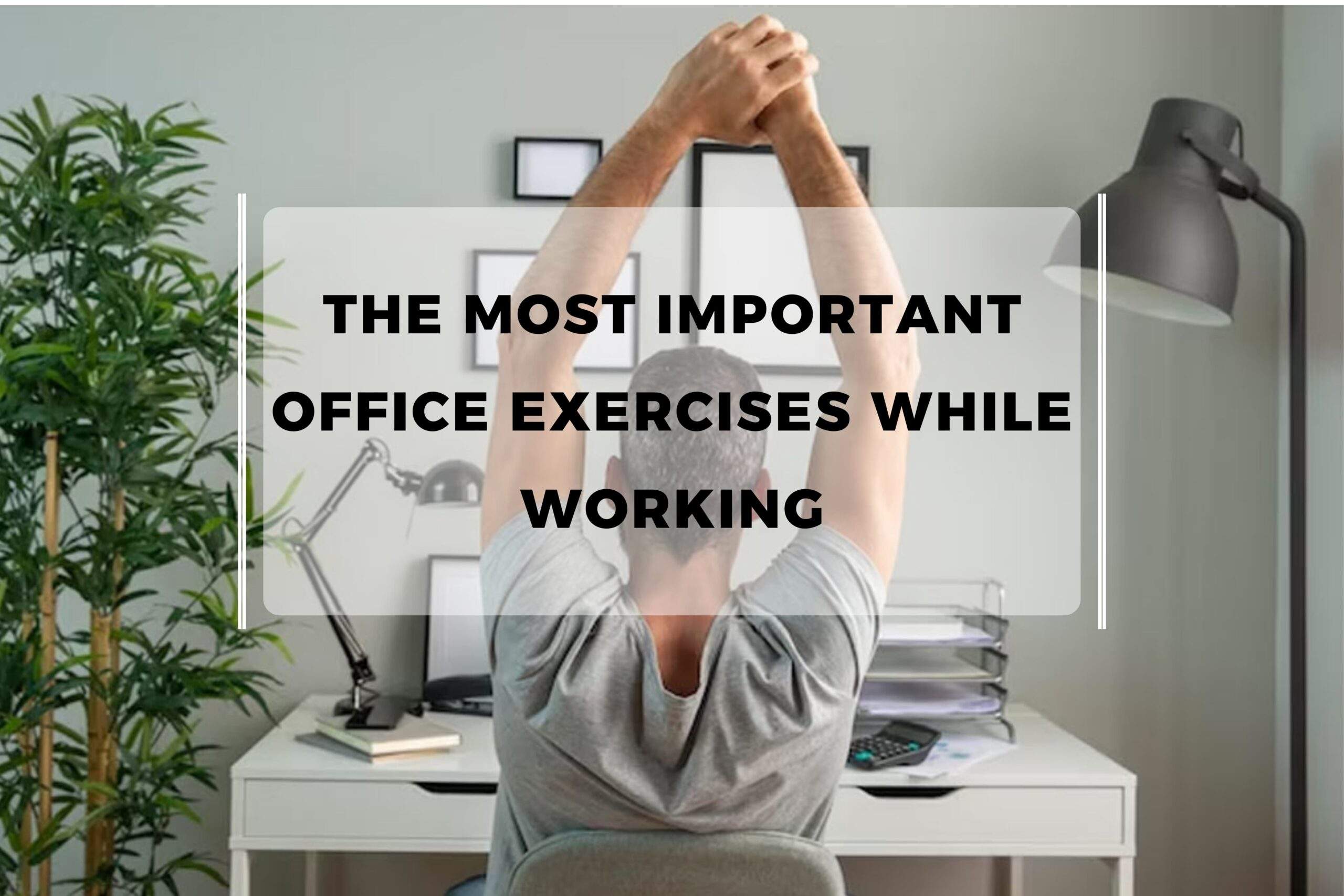In today’s fast-paced and technology-driven world, many individuals find themselves working long hours in office settings, whether it’s within a company building or remotely from different locations. This sedentary work lifestyle can have detrimental effects on physical and mental well-being. Research indicates that extended periods of sitting can lead to obesity, metabolic syndrome, and various other health conditions, making it crucial for all office workers to prioritize their health and incorporate healthy habits into their daily routine.
In this article, we will explore effective strategies to stay active and maintain a healthy work routine for all office workers, whether they work within a company building or remotely from different locations. Drawing insights from various sources, we present a guide to ensure your well-being while working in an office environment.
1- Setting Up for Success
To set the foundation for successful office work experience, it’s essential to create an ergonomic and functional workspace. Whether you work from a company building or a home office, a dedicated working environment with a proper desk and chair that support your posture is crucial. Ensure that your chair’s height allows your hips and knees to be positioned at 90 degrees, and your arms rest comfortably on the desk at a 90-degree angle.
Consider investing in standing desks or adjustable desks that allow you to switch between sitting and standing positions. Alternating between these positions throughout the day can have positive effects on your health, regardless of your work location.
2- Taking Breaks and Moving Around
One of the most significant drawbacks of office work is the tendency to remain sedentary for extended periods. To combat this, it’s crucial to take regular breaks and incorporate movement into your routine. Whether you work from a company building or a remote location, set a timer or use a technique like the Pomodoro method to remind yourself to take breaks every 25 minutes. During these breaks, get up from your desk and walk around, even if it’s just a short stroll around your office or workspace.
Studies have shown that walking improves cardiovascular function, reduces stress, and enhances creativity. Embrace the opportunity to move and stretch your muscles to improve your overall well-being.
3- Stretching and Strengthening Exercises
Incorporating stretching and strengthening exercises into your daily routine can help alleviate muscle tension, improve flexibility, and build strength. Whether you work in a company building or a home office, try incorporating these exercises to combat the effects of prolonged sitting:
Hip Flexor Stretch: Stand with one foot forward and the other back, hands on hips, and gently shift your weight forward to stretch the front of your hip.

Seated Hamstring Stretch: While sitting, extend one leg straight out and gently lean forward to stretch the hamstring.

Calf Stretches: Stand with one foot back, lean against a wall, and bend the front knee to stretch the calf muscles.

Upper Trap Stretch: Sit upright and anchor one hand under the chair, gently tilt your head to the opposite side to stretch the upper shoulder and neck area.

Wall Pushups: Stand facing a wall, lean forward, and perform pushups against the wall to engage your chest, shoulder, and arm muscles.

Chair Dips: While seated in a chair, place your hands on the edge of the seat and lower your body by bending your arms to work your triceps and shoulders.

Mini Squats: Stand with feet shoulder-width apart, bend your knees to perform mini squats, engaging your hips, knees, and ankles.

For more office exercises, read more here
A Custom Home Office Activity Plan
Regardless of your work location, creating a well-rounded office activity plan ensures that you remain active throughout the day. Implement designated breaks, stretching, and strengthening exercises into your routine to keep your body in motion and minimize the risk of developing health issues.
Here’s a sample home office activity plan:
Take Breaks: Set intervals to get up and move around every 1-2 hours throughout your workday.
Walking: Incorporate short walks to increase blood flow and reduce postural strain.
Stretching: Perform a few exercises targeting different muscle groups, such as the hip flexors, hamstrings, and calf muscles.
Strengthening: Include exercises that work multiple joints and muscle groups, like wall pushups, chair dips, and squats.
Remember, finding a balance between work and physical activity is essential for a healthier work routine, no matter where your office is located.
Conclusion
Maintaining a healthy work routine is crucial for all office workers, whether they work from a company building or a remote location. By taking proactive steps to stay active and implement ergonomic practices, you can significantly improve your well-being and productivity.
Remember to create a conducive working environment, take regular breaks to walk around, and incorporate stretching and strengthening exercises into your routine. These small changes can make a substantial difference in reducing the risks associated with long-term desk work.
Stay mindful.

